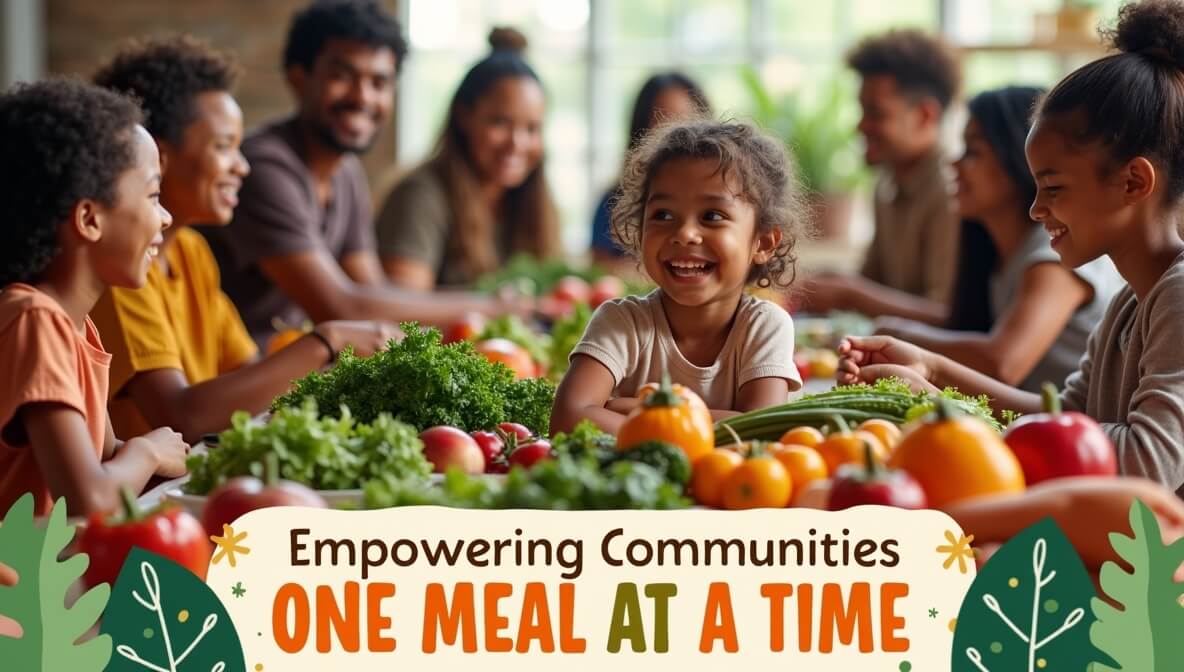How Food Banks Make a Difference in Communities

Food insecurity continues to be one of the most pressing global issues. Every day, millions of families struggle to access nutritious meals, often relying on community support to meet their needs. Food banks have become essential lifelines, offering immediate relief while also fostering long-term solutions for combating hunger. Beyond merely providing food, food banks work to address the root causes of food insecurity, build stronger communities, and inspire lasting change.
Meeting Immediate Needs
- At their core, food banks collect surplus food from grocery stores, restaurants, farmers, and individuals, redistributing it to communities in need. This process helps reduce both hunger and food waste. Surplus food that might have otherwise been discarded is put to good use, ensuring that families have access to the essentials they need to get through tough times.
- For many households, food banks act as a safety net, especially during challenging circumstances such as job loss, medical emergencies, or natural disasters. Providing emergency food access is critical for children, ensuring that no one has to go without meals and reducing the risk of malnutrition, which can have lasting effects on development. This is especially relevant when considering the importance of early childhood education, as hunger and poor nutrition can hinder cognitive development, making educational success more difficult.
Building Community Support
- Food banks are much more than places that distribute food—they serve as community hubs that foster collaboration, compassion, and resilience. Volunteers, donors, and local organizations work together to ensure that food reaches those in need. This collective effort strengthens social ties and creates a supportive environment where everyone plays a part in lifting each other up.
- In addition to direct food distribution, food banks often provide meal delivery to vulnerable populations such as the elderly and disabled, and they work with schools to ensure children have access to meals during holidays and weekends. The role of social safety nets in poverty alleviation is crucial here, as food banks often partner with local governments and non-profits to bridge gaps in public welfare systems and extend their reach to those who may fall through the cracks.
Addressing Root Causes
- Many food banks go beyond immediate relief by tackling the systemic causes of hunger. They partner with local agencies to connect families with additional support, such as job training programs, financial assistance, and healthcare resources. This holistic approach aims to address not just food insecurity but the underlying causes of poverty and inequality.
- For example, some food banks collaborate with organizations that provide microfinance solutions to help families generate sustainable income. Programs like microfinance: empowering entrepreneurs in poverty equip individuals with the tools they need to start businesses, improve their livelihoods, and escape the cycle of poverty. By combining food aid with long-term economic empowerment, food banks help ensure that families are not dependent on emergency relief forever.
Real-Life Impact
- The impact of food banks can be seen in both local and global contexts. In the United States, organizations like Feeding America distribute billions of meals each year. The World Food Programme also plays a key role on the global stage, providing critical food aid to regions affected by war, conflict, and climate change. Locally, food banks act as lifelines, helping families survive difficult periods while offering access to other essential services.
- A key focus is improving food systems to ensure sustainable and nutritious meals for the future. For example, initiatives like sustainable agriculture and waste reduction can help reduce food insecurity in the long term by creating local food systems that are both resilient and equitable.
How You Can Help
If you're wondering how you can contribute to the fight against food insecurity, here are several ways to make a meaningful difference:
- Donate: Food banks rely heavily on donations. Whether it’s food, money, or goods, your contributions go a long way in helping those in need. Even small donations can have a significant impact. Explore options through organizations like Feeding America.
- Volunteer: Many food banks are run by volunteers. Offering your time helps ensure that food is distributed efficiently and that families get the support they need. Your local food bank can provide opportunities for you to get involved.
- Raise Awareness: Educate your community about the importance of food security. Sharing articles like this one on understanding food insecurity helps raise awareness about the challenges families face.
- Organize a Food Drive: Whether it’s at school, at work, or in your neighborhood, organizing a food drive is a simple way to make a big impact. Every can of food collected helps feed a family in need.
- Advocate for Policy Change: Support local and national policies that aim to address the root causes of hunger. Advocating for fair trade practices, like those described in Understanding Fair Trade Practices and Why They Matter, is a great start.
Related Reads for Music & Lifestyle Blog
Final Thoughts
Food banks do more than just fill plates—they nurture communities, address systemic problems, and empower individuals to improve their futures. Whether through donations, volunteering, or advocating for policy change, we all have a role to play in reducing food insecurity. When communities come together, hunger can be defeated, and hope can be restored. Every small action you take brings us one step closer to a world where no one goes to bed hungry.
